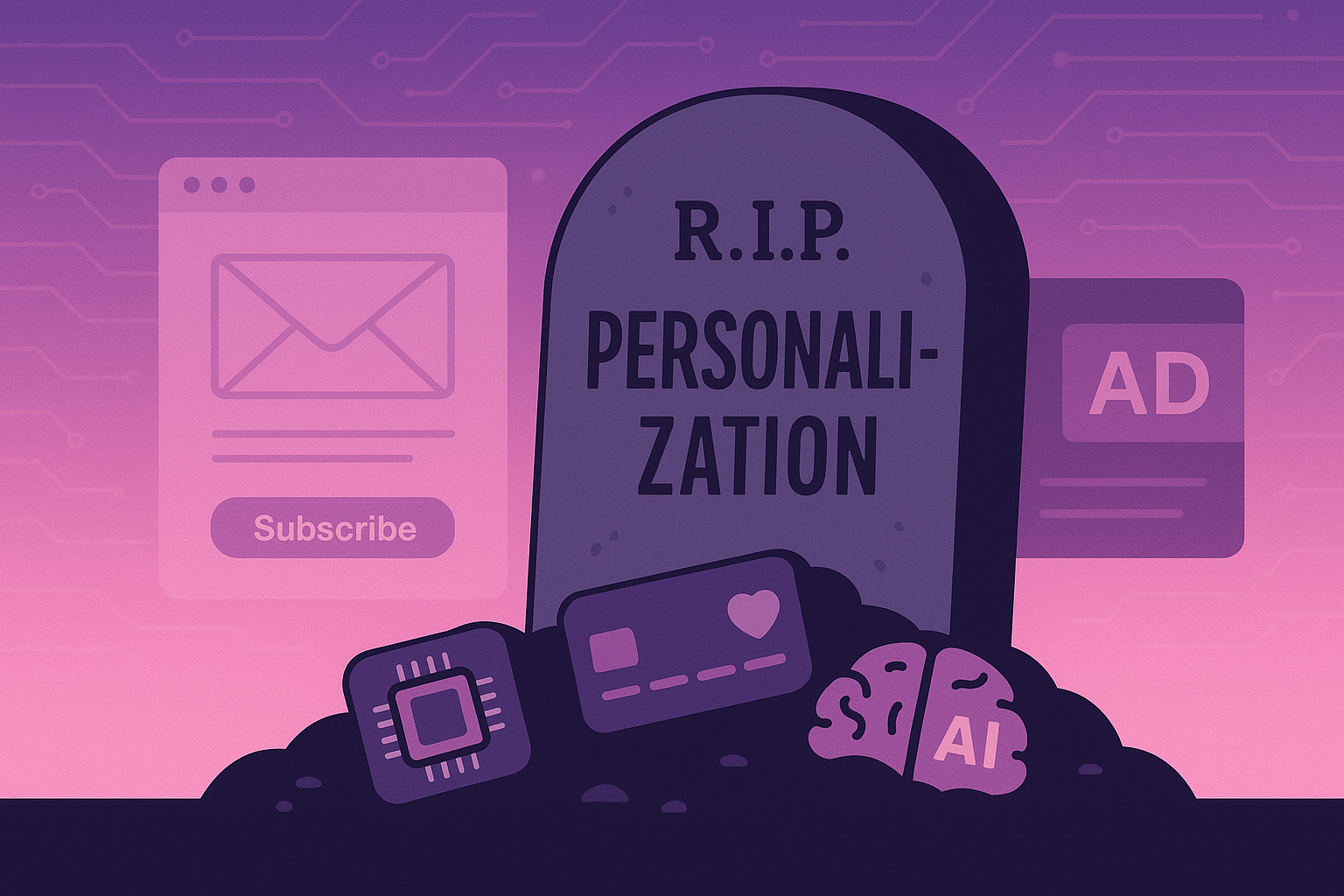Read any annual trends report for the past decade and personalization will be up there in the top three trends to watch. It started with e-commerce companies like Amazon making recommendations based on what people put in their online shopping carts and then it started evolving…
Email campaigns reminding you what else you could buy based on what you’d already bought. Coupons to entice you to return and buy more. Loyalty points, early access to sales, not to forget the adverts popping up in your feed, just because you happened to Google something.
The whole point of personalization was to help customers cut through the noise. Instead of them having to search for products or specific items, they could receive recommendations that would make it easier to shop. Except in their eagerness to create personalization, organizations overlooked a few major flaws.
- Assuming that people want more of the same
If you’re buying breakfast cereal online, then it’s not a reach to assume that a particular brand or flavor is your favourite, and that next month you’re likely to buy more. But the same approach fails dismally when it’s other types of products such as a washing machine, for example.
Most people will buy a new washing machine once or twice in their lifetime. It’s also a purchase that comes with a big price tag which means that they probably won’t have the same amount of money to spend next week or even next month. So, pitching them deals on buying a tumble dryer, a dishwasher or any other major appliance is pointless. Yet that’s exactly what most automated “personalization” efforts do. Automations assume people want more of the same without taking into consideration lifestyle context.
- Demanding data
Create a profile, tell us your preferences, and we’ll customize your shopping experiences for you. This is the type of promise that many e-commerce companies have made to customers. Yet it fell far short in terms of meeting customer expectations. Instead of cutting through the noise, it created more, all the while claiming that it just needed more data to improve.
No-one is falling for that anymore. Customers no longer believe that the cost of sharing personal data is worth it. If anything, the opposite is true. They’ve become wary, preferring anonymity and declining to share data. Most personalization efforts have failed to deliver meaningful experiences. The belief that more data will change this simply isn’t enough to convince customers to share their data.
Does this mean that this is the end of personalization, or will companies simply take a different approach? In recent years, everyone has been hopping on the AI bandwagon, using LLMs to predict what customers want. The only problem is, even these models are getting it wrong more often than not. Perhaps it’s because they’re still demanding more data, still assuming people want more of the same, still failing to account for lifestyle context. Most customers no longer buy into the idea of personalization, that’s the reality. Should companies still be investing in it?




